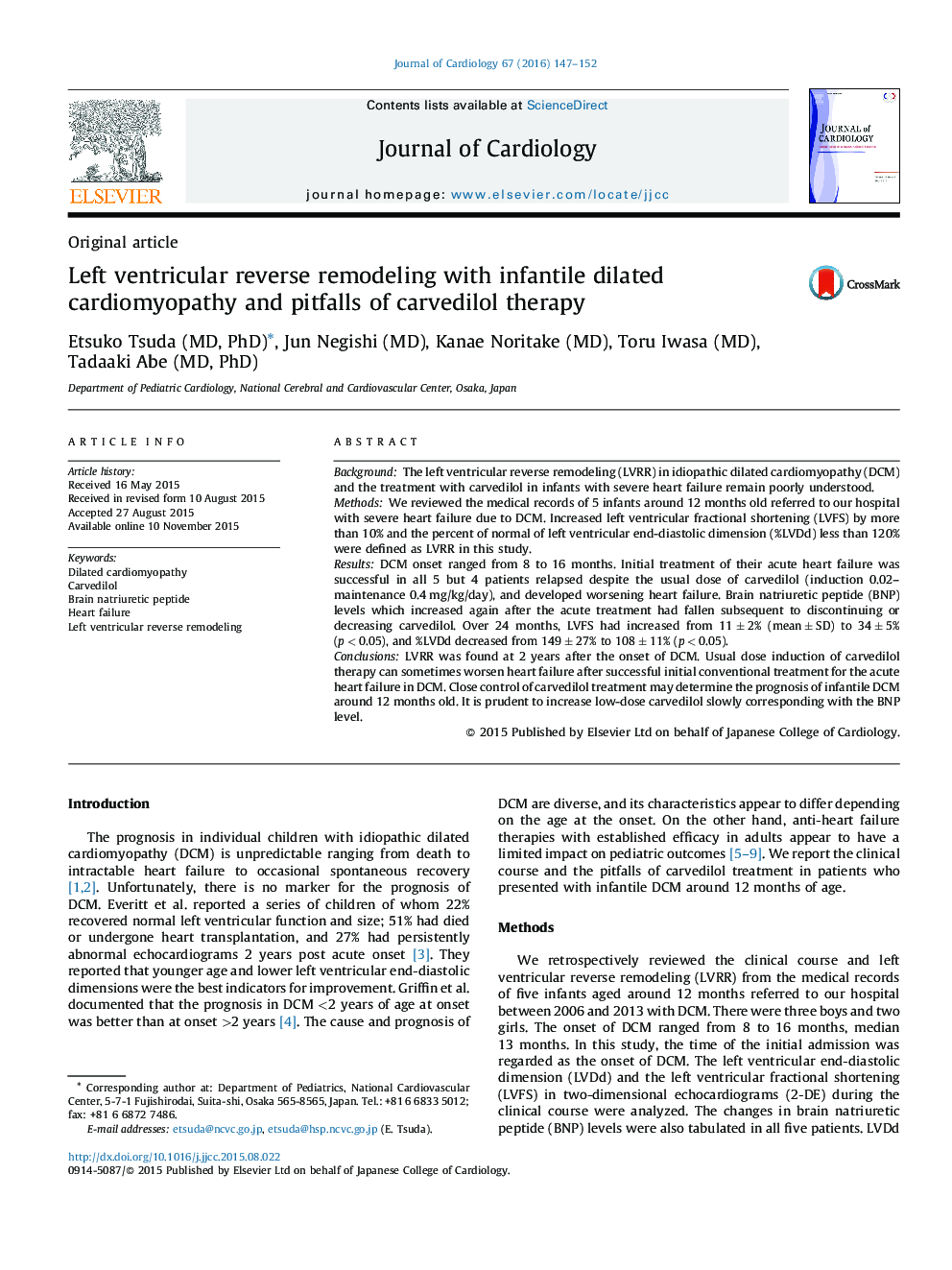| Article ID | Journal | Published Year | Pages | File Type |
|---|---|---|---|---|
| 2962823 | Journal of Cardiology | 2016 | 6 Pages |
BackgroundThe left ventricular reverse remodeling (LVRR) in idiopathic dilated cardiomyopathy (DCM) and the treatment with carvedilol in infants with severe heart failure remain poorly understood.MethodsWe reviewed the medical records of 5 infants around 12 months old referred to our hospital with severe heart failure due to DCM. Increased left ventricular fractional shortening (LVFS) by more than 10% and the percent of normal of left ventricular end-diastolic dimension (%LVDd) less than 120% were defined as LVRR in this study.ResultsDCM onset ranged from 8 to 16 months. Initial treatment of their acute heart failure was successful in all 5 but 4 patients relapsed despite the usual dose of carvedilol (induction 0.02–maintenance 0.4 mg/kg/day), and developed worsening heart failure. Brain natriuretic peptide (BNP) levels which increased again after the acute treatment had fallen subsequent to discontinuing or decreasing carvedilol. Over 24 months, LVFS had increased from 11 ± 2% (mean ± SD) to 34 ± 5% (p < 0.05), and %LVDd decreased from 149 ± 27% to 108 ± 11% (p < 0.05).ConclusionsLVRR was found at 2 years after the onset of DCM. Usual dose induction of carvedilol therapy can sometimes worsen heart failure after successful initial conventional treatment for the acute heart failure in DCM. Close control of carvedilol treatment may determine the prognosis of infantile DCM around 12 months old. It is prudent to increase low-dose carvedilol slowly corresponding with the BNP level.
